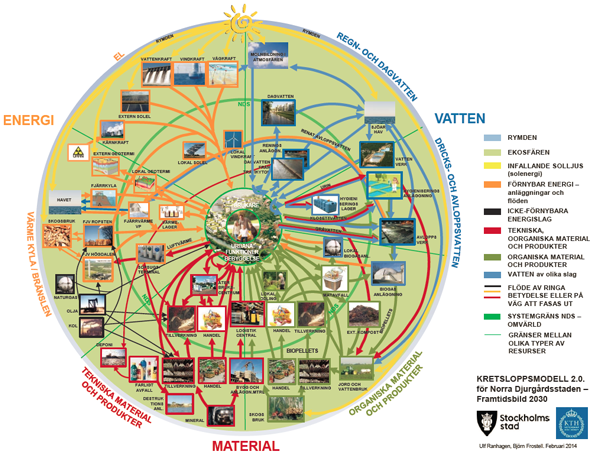Grasping the environmental complexity of city districts
An eco-cycle model for Stockholm's new environmental city district.
The Stockholm Royal Seaport is an emerging city district intended to be a global showcase for sustainable urban design. Several researchers are contributing to the development of Stockholm’s new environmental profile project.
A new report by Ulf Ranhagen and Björn Frostell departs from the Hammarby Model, an eco-cycle model used in Hammarby Sjöstad, Stockholm’s most well-known environmental project to date. Their “eco-model 2.0.” attempts to give an enhanced picture of the connections and synergies between resource flows.
The illustrative and pedagogic conceptual model will serve as a basis for further research and development. The report also provides a tool to communicate and increase knowledge regarding resource flows in city districts, both to professionals, students and interested citizens.
The report is available in English and Swedish:
Ranhagen, Ulf and Frostell, Björn (2014) Eco-cycle model 2.0. for Stockholm Royal Seaport City District: Feasibility study - final report , TRITA 2014-10, ISSN: 1653-6126, KTH Royal Institute of Technology, Stockholm.
Ranhagen, Ulf and Frostell, Björn (2014) Kretsloppsmodell 2.0. för Norra Djurgårdsstaden: Förstudie - slutrapport , TRITA 2014-02, ISSN: 1653-6126, KTH Royal Institute of Technology, Stockholm.

